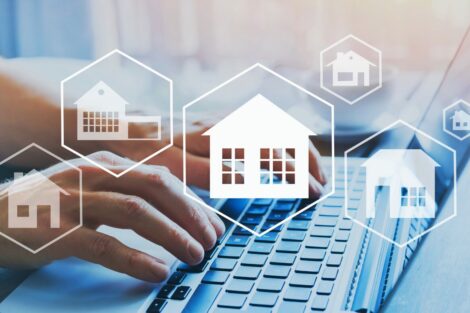
The Hidden Potential in Declined Loans

The traditional mold of financing only single-family, site-built homes is breaking wide open — and Down Payment Assistance (DPA) programs are at the forefront of this shift. As affordability challenges mount and buyers seek alternatives to match their budgets and lifestyles, DPA increasingly enables homeownership across a broader range of property types, including manufactured homes, multifamily units and newly constructed homes.
This isn’t speculation. These insights come directly from our latest quarterly Homeownership Program Index (HPI) report, which tracks and analyzes the evolving landscape of more than 2,550 homeownership programs nationwide. As lenders, agencies and developers get creative in addressing buyer needs, our data reveals a clear story: DPA drives innovation and access like never before.
In our Q2 2025 HPI report, we saw a 4% increase in DPA programs supporting the purchase of manufactured homes — rising from 971 in Q1 to 1,006 in Q2. That’s more than just a number; it’s a powerful indicator of how DPA aligns with a growing national shift toward more affordable housing types.
Why the rise? Affordability, efficiency and quality. According to the Manufactured Housing Institute (MHI), more than 100,000 new manufactured homes were shipped in 2024 alone. Built indoors under controlled conditions, these homes offer greater consistency, durability and compliance with HUD safety and energy standards than ever before. And with an average cost of $87 per square foot compared to $166 for site-built homes, they present an innovative solution for budget-conscious buyers.
What’s more, DPA programs are opening the door for these buyers by making funds available not only for down payments but also for closing costs, prepaid expenses, interest rate buydowns and even agent commissions. In many cases, buyers can stack programs for even greater financial flexibility, turning what was once a stigmatized option into a savvy, sustainable homeownership strategy.
As home prices and mortgage rates continue to climb — the U.S. median home price rose to $369,000 in Q2, and the 30-year fixed mortgage rate averaged 6.82% — buyers are looking for smarter ways to make homeownership work. One increasingly popular path is purchasing multifamily homes.
Our HPI data shows that 861 DPA programs now support the purchase of multifamily properties, a 3% gain over the previous quarter, with growing backing for duplexes (861 programs), triplexes (573), and fourplexes (546). These homes aren’t just residences; they’re income-generating assets. Buyers can live in one unit while renting out others to offset or fully cover mortgage payments. For first-time buyers and younger generations, “house hacking” is rapidly becoming a go-to strategy for navigating high costs while building equity.
Lenders often count up to 75% of projected rental income toward loan qualification, making these properties more accessible. And DPA programs don’t leave buyers to figure it out alone. Many require homebuyer education and landlord training to prepare buyers for success as homeowners and investors.
In a market starved for inventory, new construction is essential — and our HPI shows DPA programs are stepping up to make it attainable. More than 2,044 programs now support newly built homes, a figure we’re tracking more closely to monitor future growth.
This trend is a win-win for both buyers and builders. DPA helps consumers overcome the substantial upfront costs of purchasing a new home. For DPR’s builder partners, these programs represent a powerful tool to increase buyer traffic and sales velocity in a high-rate environment.
Many of these DPA programs come with tailored education and readiness resources, ensuring buyers understand the responsibilities of owning a new home and navigating builder contracts. By doing so, they help reduce buyer risk and support long-term success. And in high-cost, low-inventory markets like Seattle, San Francisco, Los Angeles, Miami and Honolulu, they offer a vital path to ownership that would otherwise be out of reach.
The impact of DPA goes far beyond easing the down payment burden. By reducing the average loan-to-value (LTV) ratio by 6%, DPA significantly improves mortgage qualification odds, especially for first-time, mortgage-ready buyers. And because many programs cover more than just the down payment — including closing costs, mortgage insurance premiums and rate buydowns — they give lenders more tools to close more loans.
For forward-thinking mortgage professionals, the expanding scope of DPA is more than a benefit; it’s a business opportunity. Manufactured housing, multifamily investments, and new builds were once niche markets; now they’re fast-growing channels that serve younger, more diverse, and underserved buyers. By embracing DPA, lenders can diversify their pipelines, boost originations, and cement their roles as trusted, innovative advisors.
Explore the full Q2 2025 Homeownership Program Index report to discover how DPA is reshaping the future of homeownership.
Down Payment Resource builds tools that help mortgage lenders, real estate agents, multiple listing services and consumer listing sites build relationships with homebuyers by connecting them with the homebuyer assistance they need.
To learn how Down Payment Resource can help you support homebuyers, contact us.
